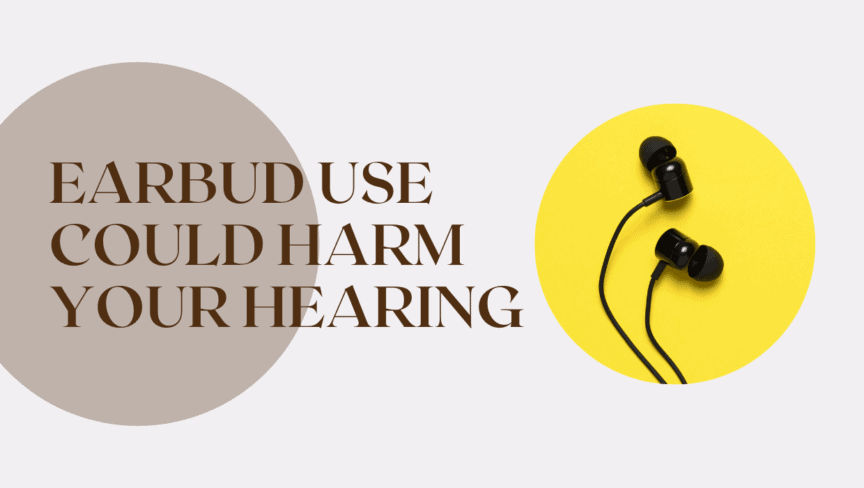- How to Care for Infants With Hearing Loss - April 15, 2024
- Hearing Aid Tips for Runners - April 5, 2024
- Overcoming Misconceptions Around Hearing Aids - March 27, 2024
Noise is so prevalent in our contemporary landscape that it’s hard sometimes to realize that we’re being exposed to potentially harmful noise levels, but all the same we are surrounded with sounds that could harm our hearing. In combination with a diet that can restrict blood flow, our cilia (the tiny, hair-like cells in the inner ear that convert the mechanical energy of sound into electrical impulses) have a hard time staying healthy. It’s important that we do what we can to keep them unharmed for as long as possible, lest we suffer undue hearing loss that will be with us for the rest of our lives.
Personal Listening Devices (PLDs)
When the Sony Walkman came on the market in 1983, news articles abounded about how we were endangering our hearing by listening to cassettes and radio on these devices. Since then, the Walkman evolved into the iPod and now our telephones (which are also incredibly powerful computers) stay on our person at all times and increase our exposure to loud sound through headphones. The maximum volume on these listening devices is even higher than the original Walkman was.
PLD Sneak Attack
We might know we’re exposing ourselves to loud sound at rock concerts, sports events and nightclubs (where we should wear earplugs, by the way), but the personal listening device is a different animal. We don’t have any social cues from others to know whether we’re creating a loud environment for ourselves. We don’t feel our clothes vibrating and know that our ears are being pummelled. We can, like frogs in a pot of boiling water, simply keep turning up the volume without realizing we’re doing permanent damage to our ears.
We use PLDs on trains, walking down busy streets, or as passengers in vehicles or airplane cabins where ambient sound is already high enough on its own to cause hearing loss after prolonged exposure. The problem is not just theoretical:
Recent studies showed that between 1994 and 2005, as the iPod came to prominence, the use of PLDs increased by 75%, and half of users set their volume at unsafe levels.
Unsafe Volume Levels
Any sound above about 85 dBA (decibels A-weighted) can cause hearing loss after about 8 hours of consistent exposure. That’s about the noise level of a passing diesel truck, or a snowblower, and less than a lawnmower. (Remember to wear earplugs when you mow the lawn!)
Contemporary PLDs can put out sound that reaches 110 dBA at your eardrums! And while it takes 8 hours of exposure for 85 dBA to cause hearing loss, at 110 dBA it only takes about two minutes. That means listening to your favorite song one time at maximum volume will cause hearing loss that will last for the rest of your life.
How to Prevent Hearing Loss with PLDs
While earbuds are wonderfully portable, they place the speaker directly in your ear canal. It’s especially important when using earbuds to make sure you’re not listening at unsafe levels. Keep the volume down! If you’re unsure of how loud is safe, try measuring their output with an SPL meter app on your smartphone, with your earbuds playing directly into the microphone. Move the earbuds around the microphone until you find the position where they’re putting the maximum volume possible into the microphone, and turn your PLD’s volume down until the meter reads lower than 85 dBA.
Using a set of over-the-ear headphones helps move the speaker source away from your eardrum and reduce the potential damage. That doesn’t mean it’s safe to crank your headphones all the way: you should still be careful to avoid loud listening even with over-the-ear headphones. Try doing the SPL meter test with your headphones, too.
Take a break from listening every hour or so. Give your ears a little time to rest and regroup; about 10 minutes is enough. But make sure you’re not exposed to other loud sounds while you’re taking a break from music listening.
Noise Cancelling Headphones
Noise cancelling headphones are a great option for those who listen in louder environments on a regular basis. Whether it’s a car, bus, airplane or whatever, noise cancelling headphones use an active circuit and a built-in microphone to detect the sound in the environment and create an equal-but-opposite signal, effectively reducing the ambient sound to near 0 dBA at your eardrum. They can work with or without sound coming in from a PLD, so you can use them on their own even if you’re just looking for some peace and quiet in a chaotic sonic environment.
Get a Hearing Test
Get regular hearing tests to make sure you’re not hurting your hearing. It’s best to detect hearing loss early so you can make the necessary changes to prevent further loss, rather than waiting until you have trouble hearing. Audiologists can provide excellent earplug options as well as make suggestions for how to protect yourself going forward. If you have hearing loss to a degree that requires hearing augmentation from hearing aids, we can help with that too.

